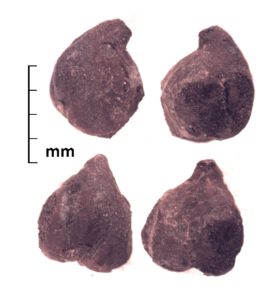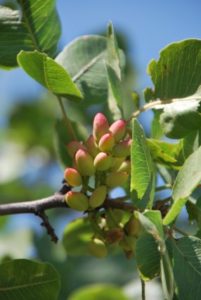The Silk Road was the largest commerce network of the ancient world; it linked the disparate ends of the vast Eurasian supercontinent and in doing so connected the imperial centers of East and Southwest Asia. While organized trade, including military outposts and government taxation, along the Silk Road dates back to the Han dynasty in the second century B.C., the exchange of goods, ideas, cultural practice, and genes, through the thousands of kilometers of desert and mountainous expanses comprising this region dates back to the third millennium B.C. This flow of cultural traits through Central Asia during the past four and a half millennia was a major driving force in the development of cultures across the Old World and shaped cuisines around the globe. With the increased application of modern scientific archaeology, specifically archaeobotanical methods, in Central Asia over the past decade, the importance of farming to past peoples of eastern Central Asia is becoming clearer. In addition, the spread of specific crops and crop varieties through the mountain valleys of Central Asia directly altered farming systems across Europe and Asia, introducing crops, such as millet, to Europe and wheat to China. Archaeobotanically tracing the path that plants followed on their long journey across Central Asia, helps us understand how these foods ultimately reached our dinner plates today.


Robert N Spengler III recently wrapped up his research in Berlin, Germany, as a Volkswagen and Mellon Foundations Postdoctoral Fellow jointly appointed at the German Institute of Archaeology (Deutsches Archäologisches Institut, DAI), in the Eurasia Department and Freie Universität, Berlin, during which time he also retained his affiliation with Washington University in St. Louis in the Anthropology Department where he held a post as a Research Associate the previous year. He defended his PhD at Washington University in St. Louis in March of 2013. He is also working with a research team in Jena, Germany, where he holds an affiliation through the Max Planck Institute for the Science of Human History (Max-Planck-Institut für Menschheitsgeschichte). He is studying the paleoeconomy and ecology of Central Asia from the third millennium B.C. onward and has ongoing research projects in Kazakhstan, Uzbekistan, Turkmenistan, China, and Mongolia. While he has used several methods in the archaeobotanical sciences, he primarily analyzes macrobotanical remains. Through this research he has shown that farming was an important part of the economy across eastern Central Asia for at least four millennia and that many important crops spread through this region in prehistory. Through his archaeobotanical studies, he is helping to fill in the last major gaps in the global map of agricultural spread, and showing how important the Silk Road was in the spread of specific crops and technologies. In addition, his data feed into a broader understanding of human adaptations, social development, and the linked nature between agricultural intensification and social complexity.


